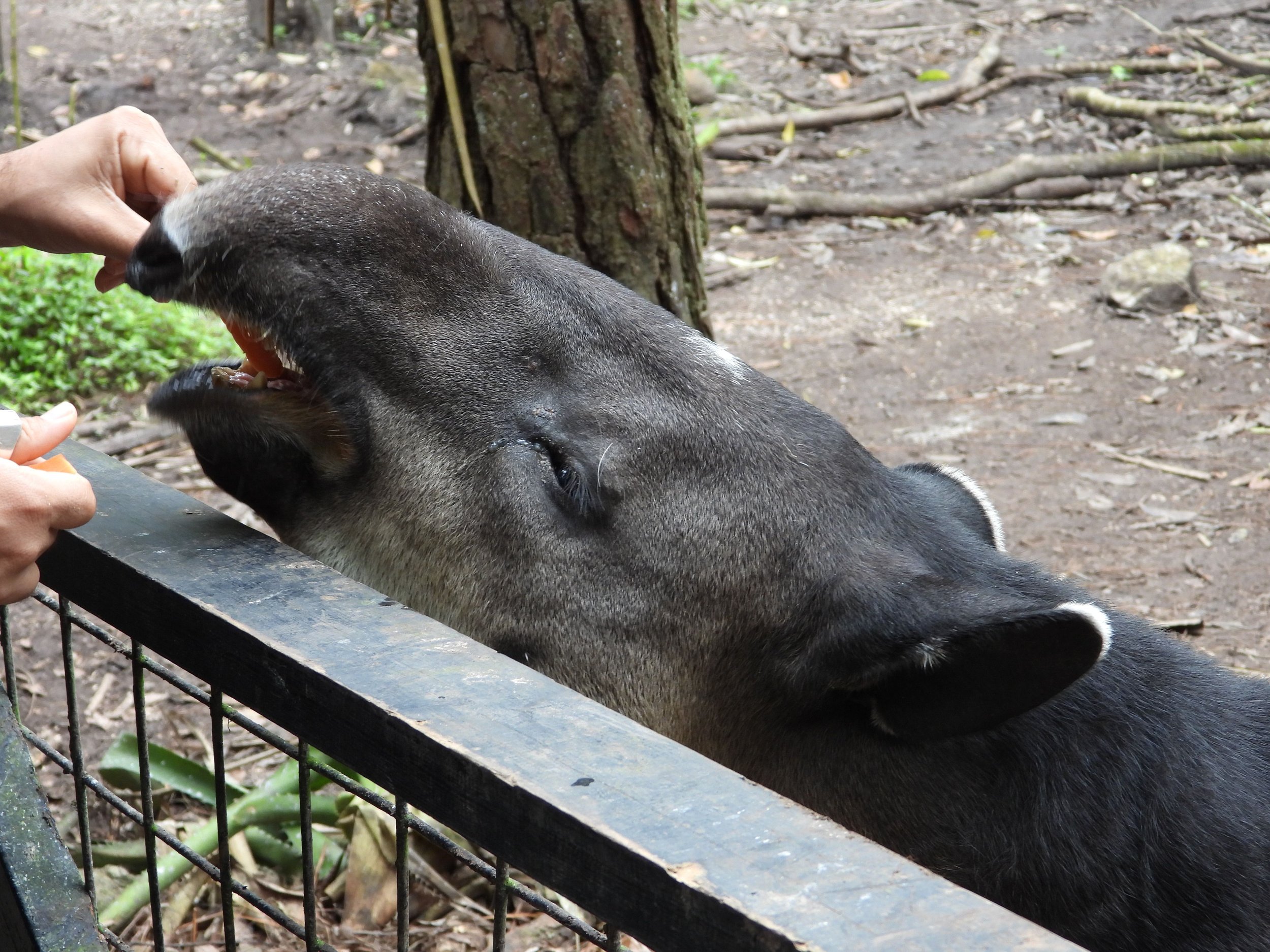Why Do We Care About Tapirs?
Why should we care about Tapirs, Belize’s national animal?
In western Belize, there are caves that date back to the ancient Mayan cultures filled with the bones of animal sacrifices. Among the bones found here are jaguars and pumas, but also a medium-sized herbivore known as Ts'iimin in a in Yucatec Maya. According to ancient myths, the blood of these animals, when mixed with corn dough and snake blood, was used by the gods to create the first humans. The animal was so sacred, in fact, that hunting one was punishable by death.
Today, these animals are known as tapirs, or “mountain cows” in Belize, and remain important to the Belizean culture. Shaped like a pig, around the size of a large dog and notable for its strange, anteater-like snout, the Tapir is actually closer related to horses and rhinos. Found in both Asia and Central and South America, the species native to Central America – known as Baird’s tapir – is the national animal of Belize.
A tapir at the Belize Zoo. Image by Inspire EdVentures.
The tapir is the largest land mammal native to the tropics – nevertheless, they’re only rarely encountered by humans in the wild. Shy, solitary, and usually nocturnal, tapirs tend to keep to their own paths through the forest, and prefer areas with lots of vegetarian close to water, while avoiding open fields or arid areas typical for farming and human settlement. As one of the largest animals in the rainforest, they have few natural predators – aside from the occasional jaguar or puma – yet in recent decades their numbers have been dwindling across Belize.
While tapirs are illegally hunted by humans, whether as trophies or for bush meat, it’s Belize’s rapid development from a small rural country to one of growing urbanization and large-scale farming that is putting the tapir at risk. Needing abundant fresh water and plenty of understory growth to forage in, tapirs have been pushed out habitats by humans and into increasingly fragmented forests. In fact, even in some protected areas in the Guanacaste National Park and Rio Blanco, tapirs have completely disappeared. For these reasons, the tapir is considered “threatened” in Belize.
Despite its status as Belize’s national animal, many people don’t understand the importance of tapirs, and why they’re worth protecting. But tapirs play an important role in seed dispersal across the rainforest, eating mangoes and other fruit and defecating the seeds at another part of their large ranges, which then become new trees. Local extinctions can therefore disrupt the heath and biodiversity of the rainforest, which are already under the threat of climate change and illegal deforestation.
A wild tapir in Belize. Image by Inspire EdVentures trail camera.
The most famous tapir in Belize was April, born on 27th of April 1983 – a date that not only became Belize’s National Tapir Day, but World Tapir Day worldwide. Brought malnourished to the Belize Zoo, she was nursed back to health by the Zoo’s founder, Sharon Matola, and became a national symbol for thirty years before passing away in 2013. Today, the Belize Zoo has several tapirs, including tapir ambassadors Indy, Fuego, and Navidad. Fuego was also found as a calf, after a forest fire possibly started by human activit separated him from his mother. Today, Fuego is a symbol of both Belize’s national animal and the risk of forest fires and other manmade threats to habitats.
At the Belize Zoo, April, and now Indy, Fuego, and Navidad, helped educate Belizeans and international visitors alike of the value of these strange and unique animals. While they may no longer be considered sacred to the gods, they are no less important to the ecology and national identity of Belize. Supporting the creation of wildlife corridors, which connect previously fragmented habitats, and preserving Belize’s wild areas from legal and illegal deforestation are all ways in which tapirs can continue to be preserved, now and into the future.
A tapir at the Belize Zoo receives treats from a zookeeper. Image by Inspire EdVentures.



